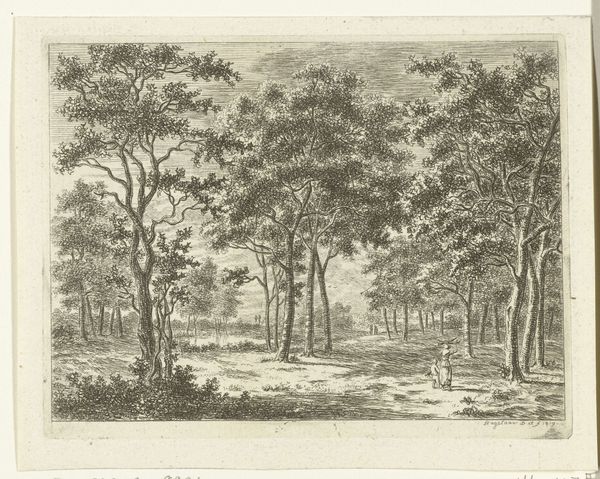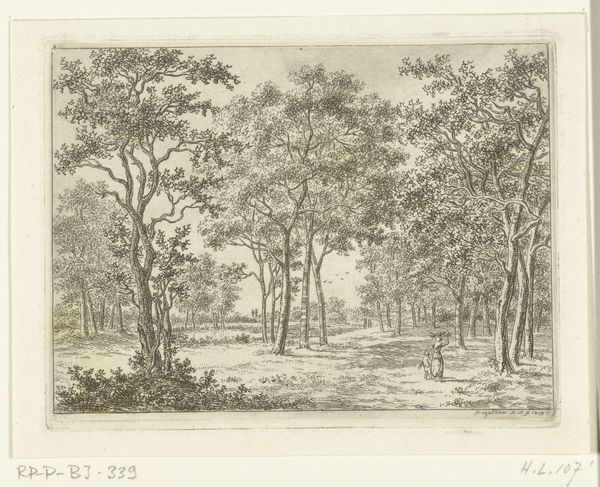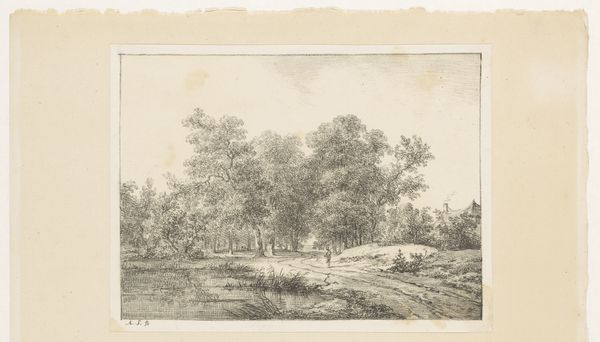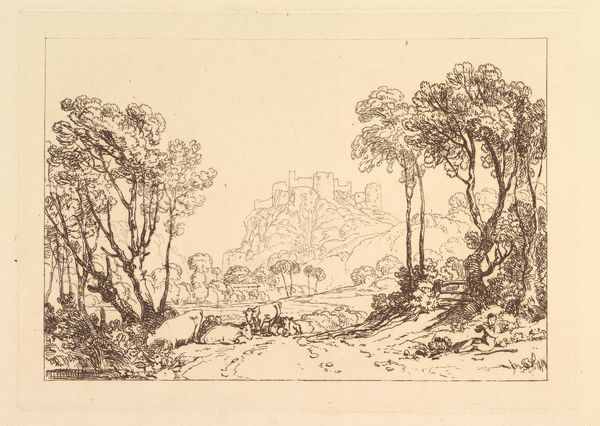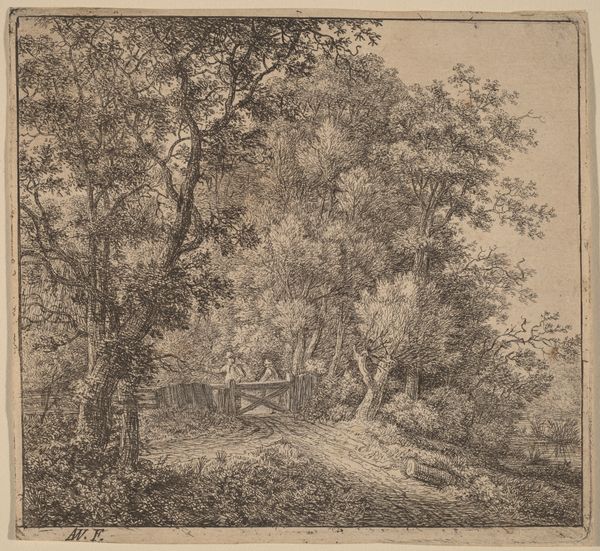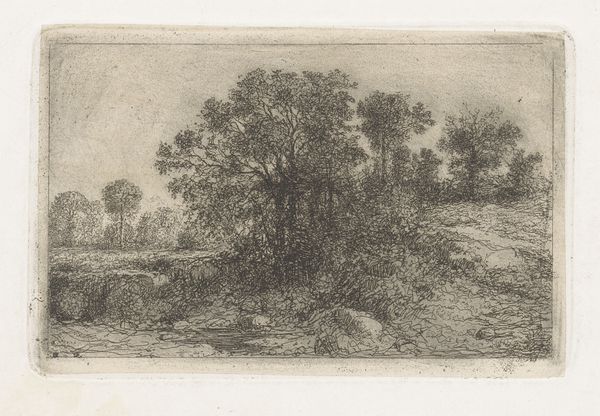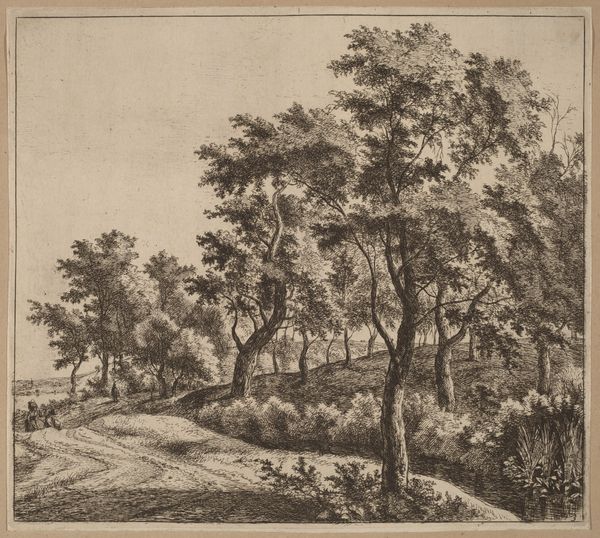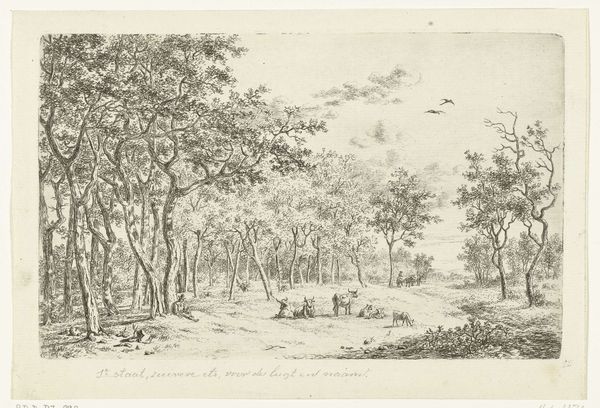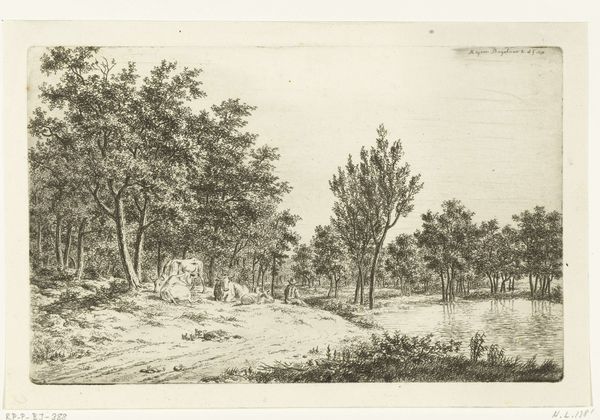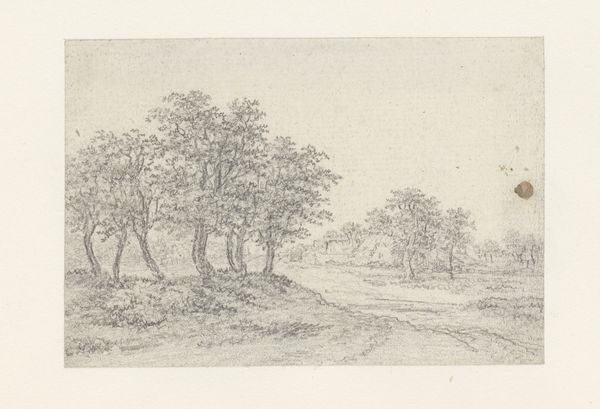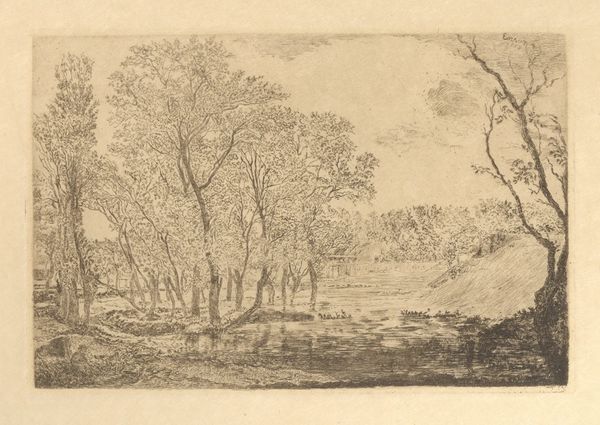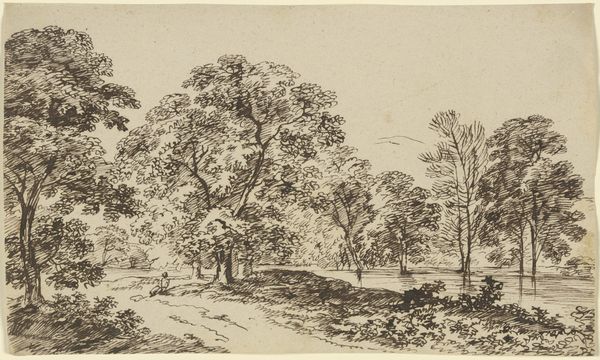
drawing, etching
#
drawing
#
etching
#
landscape
#
romanticism
#
line
#
genre-painting
#
academic-art
#
realism
Dimensions: height 193 mm, width 235 mm
Copyright: Rijks Museum: Open Domain
Curator: This etching, "Landschap met herder en schapen bij een water," translating to Landscape with Shepherd and Sheep by a Body of Water, was crafted by Ernst Willem Jan Bagelaar sometime between 1798 and 1837. It presents a bucolic scene rendered with intricate line work. Editor: Immediately, I'm struck by its serenity. The texture is so delicately worked, especially in the foliage. There’s a calmness to the composition despite all the detail, like looking into a miniature world. Curator: Indeed. Bagelaar's technique showcases the prominent use of line in academic art, aiming for realism blended with romantic ideals. Consider the context: the etching process itself involves applying acid to a metal plate, demanding meticulous craftsmanship. The consumption of prints like this reflects a growing middle class with an appetite for accessible art depicting idealized landscapes. Editor: That emphasis on accessibility and the role of landscape interests me. You see how this idyllic depiction potentially glosses over the realities of rural labor and land ownership. This sort of Romantic vision helped to construct and then reinforce very specific ideas of "nature" that continue to impact us today. Curator: That's a very valid point. The distribution and appreciation of such works were undeniably shaped by the socio-political forces of the time. Think about how landscape paintings gain popularity, often romanticizing the lives of the working class while perhaps not engaging with the material reality. The pastoral setting invites a specific audience with certain ideals of what 'nature' means. Editor: Absolutely. I find myself pondering who could acquire, value and therefore have access to this view. To fully comprehend, we must investigate this work with insights on its function as more than just a tranquil representation of nature and acknowledge the politics embedded within its presentation. Curator: It certainly moves beyond surface representation into broader social and material realities. Examining it through both lenses enriches our appreciation. Editor: Agreed. It serves as a poignant reminder that art reflects more than just what's depicted. Curator: Yes. Understanding its place within history is invaluable.
Comments
No comments
Be the first to comment and join the conversation on the ultimate creative platform.

